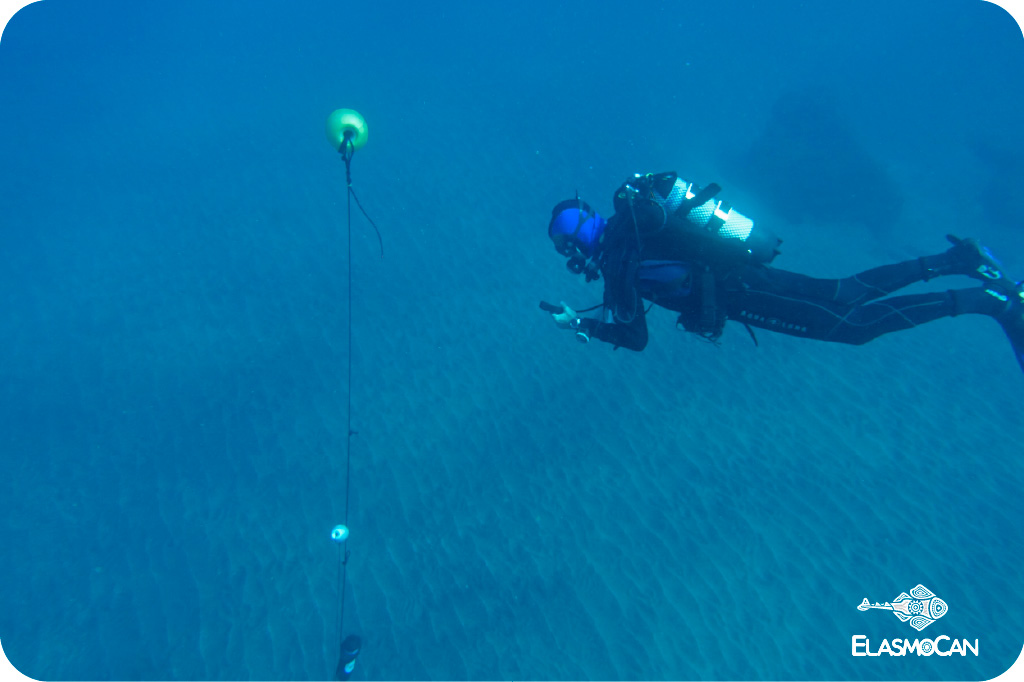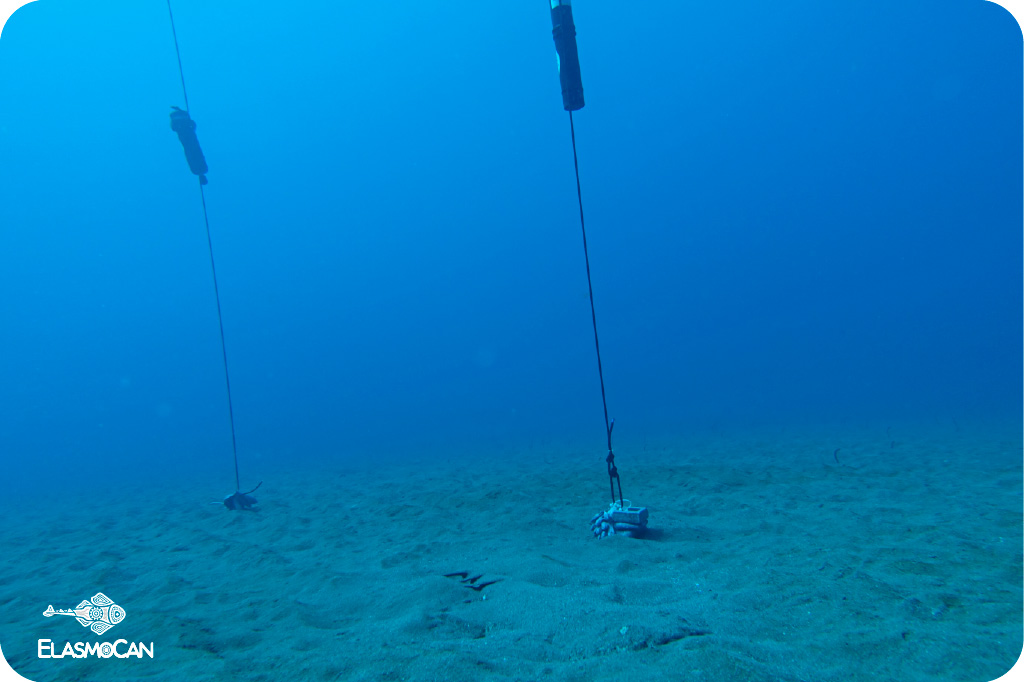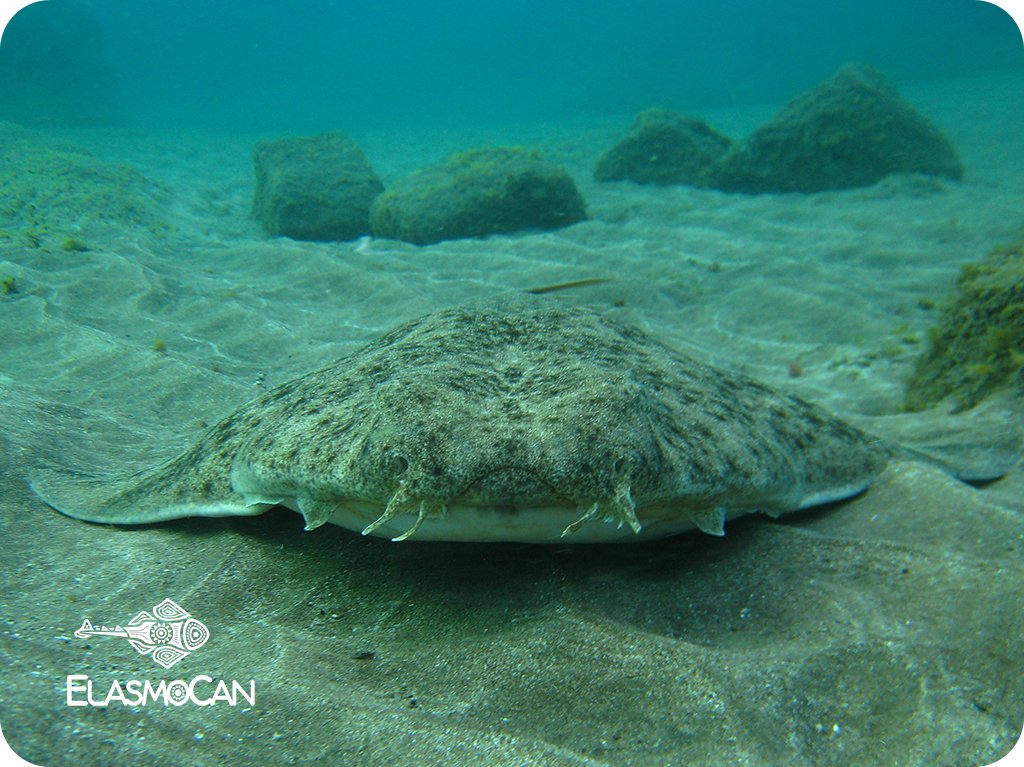 Scientists from ElasmoCan implemented a marine acoustic telemetry network that allowed the continuous monitoring of angelsharks in an area of more than 50 ha and to now their movements. This method, complementary to other ongoing investigations of the group, was developed to have a scientific basis in the strategies of the Special Conservation Areas (SACs) from the Natura 2000 network, and can be applied in other species and areas of interest.
Scientists from ElasmoCan implemented a marine acoustic telemetry network that allowed the continuous monitoring of angelsharks in an area of more than 50 ha and to now their movements. This method, complementary to other ongoing investigations of the group, was developed to have a scientific basis in the strategies of the Special Conservation Areas (SACs) from the Natura 2000 network, and can be applied in other species and areas of interest.
 The research project “Monitoring network for the angelshark Squatina squatina in the SAC Costa de Sardina del Norte: creating knowledge for its conservation”, with the support from Biodiversity Foundation from the Ministry for Ecologic Transition and the Demographic Challenge and Loro Parque Fundación, revealed new knowledge about the behaviour of these sharks. The information was collected via an array of hydrophones, anchored in the bay of Sardina, that register signals from small implanted transmitters in the angelsharks. You can find more information in this infographic.
The research project “Monitoring network for the angelshark Squatina squatina in the SAC Costa de Sardina del Norte: creating knowledge for its conservation”, with the support from Biodiversity Foundation from the Ministry for Ecologic Transition and the Demographic Challenge and Loro Parque Fundación, revealed new knowledge about the behaviour of these sharks. The information was collected via an array of hydrophones, anchored in the bay of Sardina, that register signals from small implanted transmitters in the angelsharks. You can find more information in this infographic.
 The conservation potential of the SAC Sardina del Norte for angelsharks is noticeable from their resident pattern and movements within the monitored area during the study period. Knowing the role of this SAC in the species’ life cycle and the species’ conservation objective that can be achieved involves, in between others, monitoring a larger number of individuals over a prolonged period. In addition, it is possible to locate individuals during isolated searches in case there is information that they left the study area.
The conservation potential of the SAC Sardina del Norte for angelsharks is noticeable from their resident pattern and movements within the monitored area during the study period. Knowing the role of this SAC in the species’ life cycle and the species’ conservation objective that can be achieved involves, in between others, monitoring a larger number of individuals over a prolonged period. In addition, it is possible to locate individuals during isolated searches in case there is information that they left the study area.
 Dr. Filip Osaer, project leader, highlighted the importance of this pioneering initiative that can reveal the movements of the individuals with and approximation and resolution so far not achieved in angelsharks. It is therefore a promising method for the monitoring of angelsharks, and to evaluate aspects of the threads and pressures to which they are subjected.
Dr. Filip Osaer, project leader, highlighted the importance of this pioneering initiative that can reveal the movements of the individuals with and approximation and resolution so far not achieved in angelsharks. It is therefore a promising method for the monitoring of angelsharks, and to evaluate aspects of the threads and pressures to which they are subjected.
It should be noted that the angelsharks can also be detected by hydrophones that use a different signal protocol than the one from the present study. Thus, creating synergies with other projects that use equipment from a different manufacturer, and maximising the possibility to obtain information.
Discover more in this project video:
With the support from:

Acknowledgement to:
![]()

